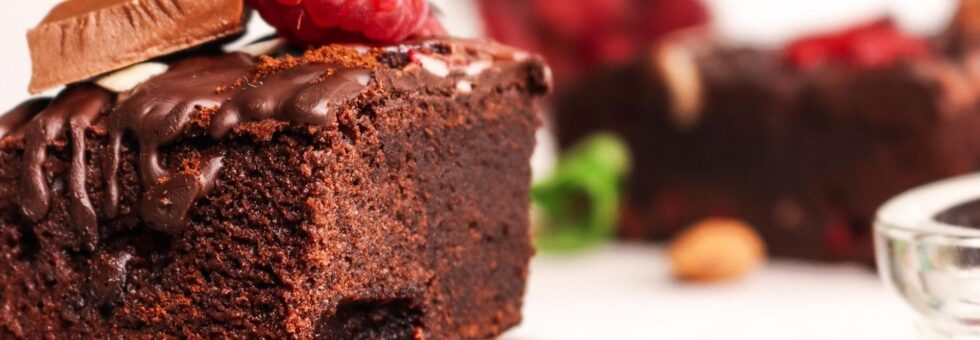It’s all fun and games until you realize you messed up the measurements in your homemade marijuana edibles. While you quickly make calculations in your head and ponder if this mistake will cost you 3 or 12 hours, you get ready for anything. This is one of the most common mistakes when cooking marijuana edibles. And of course, it’s not the only one. In this article we will focus on the X most common mistakes when cooking cannabis edibles, and, more importantly. how to avoid them!
What Are Marijuana Edibles?
We already discussed all about cannabis edibles and their future in previous articles. Marijuana edibles are basically food or drink products infused with cannabis extracts. They can contain CBD, THC or both depending on the type of experience the user is looking for. So anything from sodas, coffee, gummy bears, cookies, butter, and even the famous pot brownies are considered marijuana edibles.
High & Side Effects
Cannabis edibles have a different high & side effect than other consumption methods. Since they’re absorbed through the digestive tract, the relaxing or psychoactive effect takes longer to kick in. But this means that it will also last longer than other methods like inhaling or vaping. Also, edibles normally contain larger doses than a regular joint or vape, meaning that you get one hell of a kick in one tiny gummy bear.
Edibles are part of the future of cannabis. But as we said before, it’s very easy to make a mistake when cooking different types of edibles. And that’s where the fun stops and the worries begin.
11 Most Common Mistakes When Cooking Edibles
We’ll begin by enlisting the most common mistakes when cooking cannabis edibles… and how to avoid them for the next time you feel like baking a batch of brownies.
1. Overgrinding
“If you want better tasting edibles, DO NOT FINELY GRIND THE MARIJUANA! What you are trying the extract, the plant’s resinous trichomes, are ON the buds and leaves not IN them! All grinding accomplishes is to put more plant material into the finished product which in turn increases green color and unwanted herbal flavors”
– Cheri Sicard, Cannabis Cheri
There’s a bit of an urban legend out there that you need to finely grind your weed in order to use it for edibles. But since the plant’s trichomes are on the buds and leaves, not in them, overgrinding only leaves you with more “plant” material and less trichome material. Not to mention that your extract will turn green and herbal-flavored. Not exactly what you’re looking for in a chocolate chip cookie.
2. Making It Too Hot
When you cook marijuana at a temperature that is too high, the THC component is broken down and degraded. Try not to use infused marijuana oils for sautéing or frying. And when baking, make sure the cannabis concentrate is in the batter. You can cook it inside the oven at 375ºF since the food itself doesn’t get as hot as that.
3. Adding Too Much
“I’ve had quite the experience with edibles, namely brownies, which once resulted in me taking a 17-hour nap. My friends thought I had died. This did not falter my resolve, however, since I have consumed them a couple of more times, being careful with the dosage.”
– Snezhina Piskova, copywriter at Independent Fashion Bloggers
Also known as overmedicating. One of the biggest mistakes both when cooking and when consuming cannabis edibles is going too hard, too fast. Adding too much marijuana to a particular edible is going to end badly, same as eating too many goodies before giving them time to kick in.
4. Not Adding Enough
Same thing as before, only backwards. If the batch you prepared is too weak, you can do two things: eat another piece at least 45-60 minutes after consuming the first one. Or you can dissolve some kief or hash into the mix by heating it gently.
5. Not Following The Recipe
Not following a cooking recipe can be a recipe for disaster. You can add salt instead of sugar, or get the cooking times wrong, or burn your precious edibles. All of which means one thing: it’s going to get wasted. You need to be mindful of the portion sizes, the amount of cannabis you need to add and how long you need to cook it for.
6. Being Narrow-Minded
Gummies, brownies and baked goods aren’t the only thing that can be cooked with cannabis! Matter of fact is, almost anything can be infused with cannabis – from your morning coffee to your pesto pasta. Don’t play small and open your mind to new recipes and experiences.
7. Not Decarboxylating
If you’re cooking with the cannabis flower, you need to know one thing: raw cannabis has zero THC in it. So consuming any edible made with raw cannabis will have very disappointing results. So before adding your cannabis to your oil or batter, be sure to decarboxylate it by adding heat. All you need si to preheat your oven to 220-235ºF (depends on oven model & potency), line a baking tray with parchment paper, and add in your raw flower. Leave it in for a few minutes (think 30-40) and take it out. Now your marijuana is activated and ready to be used in any type of dish!
8. Not Stirring Enough
When cooking an edible, be sure to stir, stir, and then stir some more. Ensure the cannabis distribution is even so that each portion size has the same amount of cannabis. And if you’re not sure, stir again.
9. Not Testing Your Cannabutter
“An easy at-home way to make edibles is to start with cannabutter. It’s fairly easy to make and it’s very easy to substitute in for butter in any recipe. Unless you’re sending your cannabutter for potency testing, there’s really no way to tell how strong it is. Every time you make cannabutter, the potency will vary. The best thing to do is to take a teaspoon of the cannabutter and eat it on its own. Wait up to two hours until you feel the effects. From there, you can do the math in your recipe and get a sense for how strong each serving will be. Err on the side of caution when you’re starting out and make the servings less potent than you want. As the saying goes, “You can always eat more, you can never eat less.”
– Heather Rodman, VP of Brands & Marketing at Growth Network
10. Being Afraid Of Trial & Error
Many people give up after their first batch of cookies wasn’t good enough. But just like everything in life, the key is trial and error. Perhaps your first cannabutter was too potent, or too weak, or maybe too herby. The key here is to practice and try again until you find the best way to make it! So don’t be afraid to fail – it will only lead to delicious edibles, so there’s no harm in trying (and then trying some more!).
11. Not Seasoning Enough
“So many people have bad experiences when cooking edibles because they don’t add any flavoring or seasoning to their recipe. Unless you like the taste of grass, it’s unlikely you’ll enjoy the taste of the edible without this addition! You can add healthy spices like cinammon or turmeric to your recipes to add some extra flavor, plus you’ll get added health benefits.”
– Sam Williamson, co-founder of CBDiablo
Grilled chicken doesn’t taste the same way if it’s unseasoned. Same goes for any edible, cannabis or not. Don’t be afraid to season away and take your dishes to the next level.
Conclusion
An article by Cottage Life states that: “the future is edible” (and we actually have an article on precisely this!). And we agree. Cooking marijuana edibles can be a fun and joyful experience. You can let your creativity run wild, crafting new dishes and recipes and sharing this moment with friends and family. And now that you know the most common mistakes, you can avoid them in order to make the best tasting cannabis edibles in your state. Or at least your block. You can learn more about cannabis horticulture, or hemp & CBD in our certificate programs and courses!

